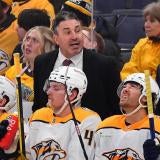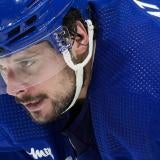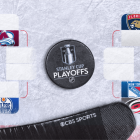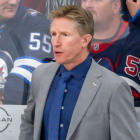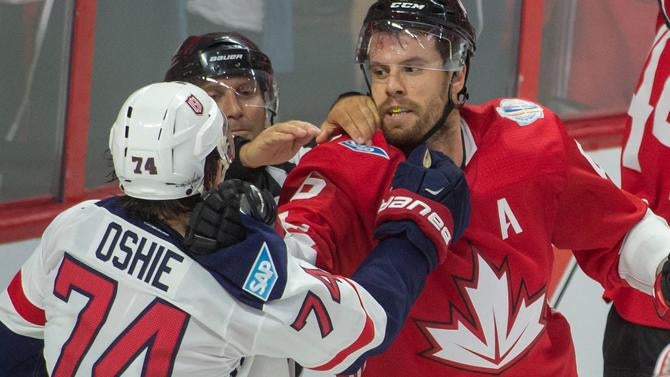
The U.S. and Canada played two spirited exhibition games ahead of the World Cup of Hockey. They ended up splitting the games, with USA winning 4-2 on Friday night in Columbus, and Canada taking the finale 5-2 in Ottawa.
Here's a look at some of the things we are taking away from those two matchups.
1. The intensity of the rivalry hasn't faded
Both exhibitions provided a window to the USA-Canada rivalry, where it seems that the gap has been widening again in the years since the U.S. beat Canada in the preliminary round and came within a goal of the gold medal in Vancouver in 2010.
The two things that the exhibition told us about these clubs is that there's still a lot of bad blood, much of it emanating from the U.S. trying to assert itself, and the players do actually care about the World Cup.
One of the big questions coming in is how seriously the players would take this tournament, knowing that it's not the Olympics and that it's primarily a cash-grab by the NHL. If you watched either of the exhibitions, you know that there's a lot on the line for these players.
The physicality of each game seemed to match that of the most intense NHL rivalries. There was a lot of stuff after the whistle, scrums at the end of just about every period and moments like this:
Hockey pic.twitter.com/tZEgSKvQpW
— RMNB (@russianmachine) September 11, 2016
It prompted at least one NHL coach to express concern about the way the games were played:
Spoke to one NHL coach today, who seemed genuinely worried about the physicality in last night's Canada-US game. Said it was dangerous.
— Michael Traikos (@Michael_Traikos) September 10, 2016
Canada also (smartly) held Sidney Crosby out of the second exhibition against Team USA. There wasn't a lot to be gained by him playing in another risky game that didn't even count.
The players are definitely taking this tournament and this rivalry seriously. Now we get to see what these two teams look like in a live tournament game in just over a week. It should be great.
2. Canada appears set to continue its dominance from Sochi
If you'll recall the semifinal game between the U.S. and Canada at the 2014 Olympics, you'd remember it as a completely one-sided game that ended with a 1-0 Canada win. The Canadians dominated the possession game and kept U.S. chances few and far between.
Watching the first two exhibition games looked to be much of the same. The Canadians were not allowing many quality chances, while they were creating dozens of their own. Over the two games, Canada controlled 62.2 percent of the shot attempts at 5-on-5. When the teams were at full strength, the gap was apparent.
3. USA spent much of both games chasing
If you're one of the many who criticized USA's roster decisions heading into this tournament, you may have felt vindicated after watching the exhibitions. The U.S. got that win in the first game despite being mostly outplayed. Jonathan Quick, like he did in Sochi, bailed them out plenty and showed the value of a good goaltender.
On Saturday night, they almost were never in it. Needless penalties and a relative lack of energy put them in a hole they couldn't get out of. It also looks like John Tortorella has already begun tinkering with lines, which looks necessary as none have really looked consistently threatening.
The big question coming into the tournament is if they left too much skill on the sidelines. That question will persist unless Tortorella finds the magic combination that brings the goals.
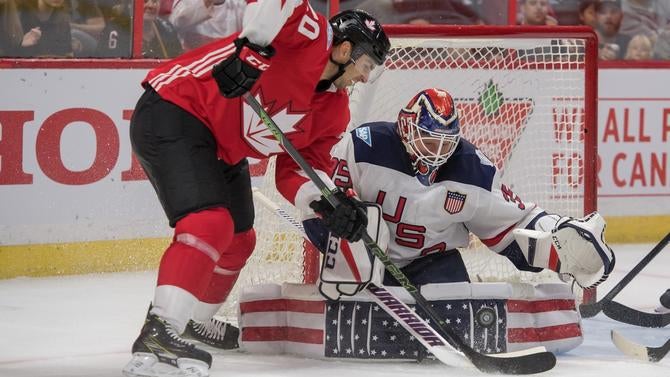
4. The goalie picture remains a little murky after the exhibitions
All six goalies played in at least a portion of the pre-tournament games between the U.S. and Canada.
Jonathan Quick was the best of the bunch, making 29 saves on 30 shots in only 40 minutes of work in the first game. Ben Bishop played the third period of each game for Team USA and made 22 saves on 24 shots. Cory Schneider started Game 2 for Team USA and made 20 stops on 24 saves over 40 minutes of work.
For Canada, Carey Price played all of the first game for Canada and was a little shaky to start, but managed 18 saves on 21 shots. Braden Holtby got the start in Game 2 and made 11 saves on 13 shots while playing half of the game. Corey Crawford came in and looked awfully sharp, stopping all 10 shots he made.
Based on the way the games were structured, you have to figure Canada is still leaning toward going with Price, but I'd be surprised if he started every game in the tournament. Meanwhile, Quick may have tightened his grip on the U.S. job as the incumbent. We'll have to see how Tortorella uses his goalies in the final exhibition against Finland on Tuesday.
5. Torts is already putting public pressure on one of his players
If you were taking bets on how long it would take for John Tortorella to publicly call out one of his players, whoever had "after the second exhibition game" can collect.
"He's OK. I need more out of him," Tortorella said of Pacioretty Saturday (via Sportsnet). "I know how he can play.
"Max has got to give me some reason to give him more minutes here. Max is a pretty important player for us, so we hope he gets going."
Tortorella also mentioned that he can't wait for guys to get going, which is fair. When the tournament begins, the team has to be ready right away. They only get a max of seven games to try and win this thing, so you can't ease into it. That said, based on Pacioretty's body of work as a perennial 30-goal scorer, it's hard to imagine him riding the pine.
6. Ryan Kesler has Team Canada's attention
After an awkward hit Kesler delivered on Shea Weber, one that got Kesler tossed from the game, it was pretty clear he was going to be a marked man. As a player that loves to be hated, Kesler succeeded in making himself a target.
Early in the second exhibition, he took a hard hit from John Tavares that briefly sent him to the dressing room. Later that period, Joe Thornton went out of his way to drill Kesler, who didn't even have the puck. Thornton cost Canada power-play time by getting whistled for interference.
Thornton hit on Kesler pic.twitter.com/VHcuwO2MiG
— Stephanie (@myregularface) September 10, 2016
While Kesler probably has been alternating ice bags all morning, that's the exact kind of thing he wants to see. He'll do anything to distract the other team from playing hockey. It ultimately might not mean much (Canada still scored five goals), but it's something he and the U.S. view as an asset.
7. USA is going to have to work on their penchant for ill-timed penalties
In the second exhibition game, both teams took a lot of penalties, many of them needless. USA's Kyle Palmieri took three minors on his own. Canada went 3-for-8 on the power play. The U.S. wants to play rough, but if they can't do it smartly, it's going to get them torched by the better teams in the tournament.
8. Canada's special teams fared better on Day 2
After neither team managed to score a power-play goal in the first game, the two combined for four in Saturday night's contest. Canada didn't even have its true No. 1 power-play unit for the second night as Sidney Crosby didn't dress, but it didn't much matter.
The Canadians are going with a one-defenseman set-up on the power play. The amount of talent they have on any one unit is just disgusting. As noted, they went 3-for-8. Look for Steven Stamkos, John Tavares and Brent Burns to be major factors on the power play in the tournament. Here is Stamkos connecting with Tavares for one of Canada's power-play goals:
— Stephanie (@myregularface) September 10, 2016
For the U.S., they're still working out some kinks. It's clear they want a lot of Dustin Byfuglien as the trigger man, with Patrick Kane and Joe Pavelski getting a lot of time on the advantage, too.
9. Canada dominated USA's top line at even strength for the most part
If the U.S. is going to have any chance in this tournament, they need their top line to be firing. It's part of the reason Tortorella called out Pacioretty. They were mostly dominated in Saturday's game and that probably has a lot to do with Canada having two of the best defensive forwards in hockey in their top six.
Canada can throw out Patrice Bergeron -- who is going to play on Crosby's right wing normally -- or the line that Jonathan Toews centers and they're going to have an edge on Joe Pavelski, Patrick Kane and whoever ends up as their permanent left winger. This is a big reason Canada will be favored in any matchup vs. USA and another reason that if the U.S. doesn't get any secondary scoring, they're going to be toast.
10. There was no good reason for these teams to play back-to-back games in pre-tournament
After the long offseason, the players had less than a week of practice and then played their first two games back-to-back. Only a few teams (including Canada) will have back-to-backs in the tournament at all. Adding them before the tournament schedule begins seems like an unnecessary risk. As we saw in the second game, both teams were sluggish compared to the incredible pace of the night before and it was hard to blame them at all.
There was really no need to go back-to-back. The game wasn't televised in the U.S., Ottawa would sell out a USA-Canada game any day of the week and the players are already putting themselves at risk of injury just by playing in the tournament. Going with a back-to-back as their first live hockey action did the coaches no favors for evaluation purposes either.
Both the U.S. and Canada will play one more exhibition game before the tournament goes live on Sept. 17. USA takes on Finland on Tuesday at 7 p.m. ET (ESPN), while Canada will play Russia on Wednesday at 7:30 p.m. ET (ESPN2)







